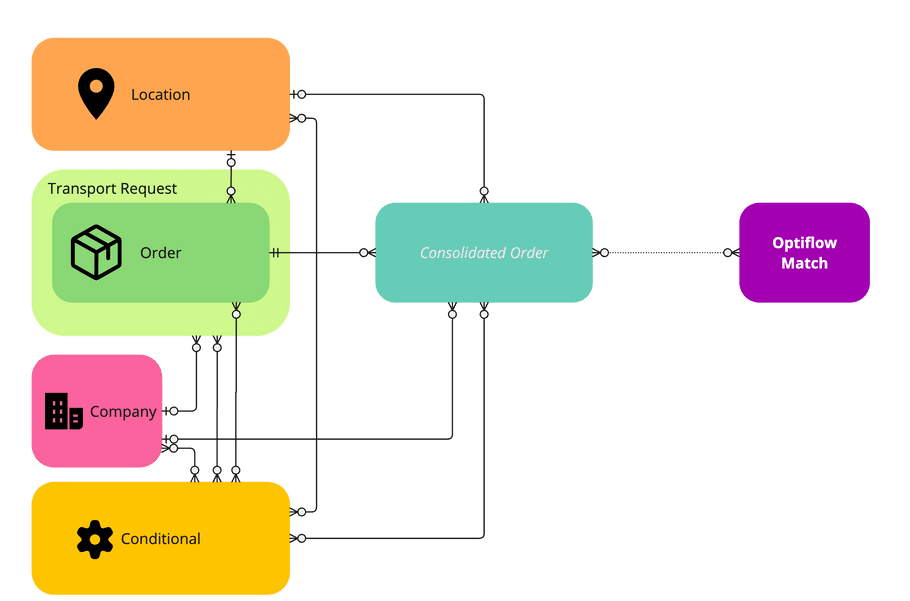Domain
A high-level, functional description of the domain entities and their relationships.
Entities
Order
Orders are the backbone of your operation as they describe distinct tasks that need to be executed within the context of an optimization. An Order has
properties describing when and where it should be executed. It also has requirements and constraints that describe what resources are suitable for executing
the task.
Orders come in three types, based on the type of activity and optimization:
-
PICKUP: A pickup task for your company -
DELIVERY: A delivery task for your company -
PICKUP_DELIVERY: A task consisting of both a pickup and delivery activity.
Location
Locations are reusable entities that describe a single Location where an activity might be executed. They allow for reuse of these properties across
Orders which simplifies managing the Location-specific properties of your Orders by providing as single point of responsibility. Multiple Locations can
be created for the same geographical location, ie: for modelling distinct business cases in the same building or business centre.
Locations can heavily impact the Orders in a planning: they can include time windows, timings and even additional requirements and constraints.
Transport Request [Deprecated]
TransportRequests describe an administrative grouping of Orders, this entity is not used in the optimization but can be used to steer it
using Conditionals.
Reason for deprecation: the additional grouping has mostly caused confusion as it has no effect while planning. It was often hard to get a second meaningful Business ID which resulted in a 1:1 mapping of this concept. This is not intended to be an alternative to a bulk operation.
Company
Companies can be linked to a TransportRequest to identify its client, this enables you to steer the optimization using Conditionals.
Currently, cannot be used on the order level, only through a transport-request.
Conditional
Conditionals describe rules for modifying your Orders. These rules can target any of the previous entities, enabling you to model your specific business
case optimally. Any specific knowledge your planners have, but that can not be represented in your source systems, can find a suitable place here.
Consolidation
The consolidation process takes all the previously described entities into account to create a Consolidated Order. Through this process it is possible to
modify opening hours for all deliveries at a certain location, temporarily increase timings when there are road works, always add requirements to orders
matching your predicates, and much more.
The Consolidated Order cannot be directly managed through the APIs, however, it is included in the domain visualization due to its importance.
Triggers
Orders are consolidated when:
- they are first created, or
-
they have a future execution
and
any of its inputs change (eg: the
Orderitself, itsLocation, aConditional, ...)
Categories [Deprecated]
Categories are no longer recommended, there are two ways of organising orders using a single plangroup or multiple labels. For more info see the orderbook topic How to organise orders for use in the planning.
Entity Relationships
